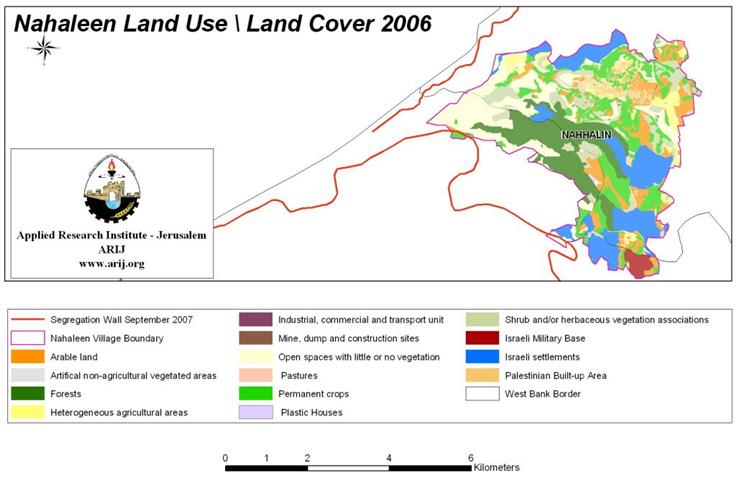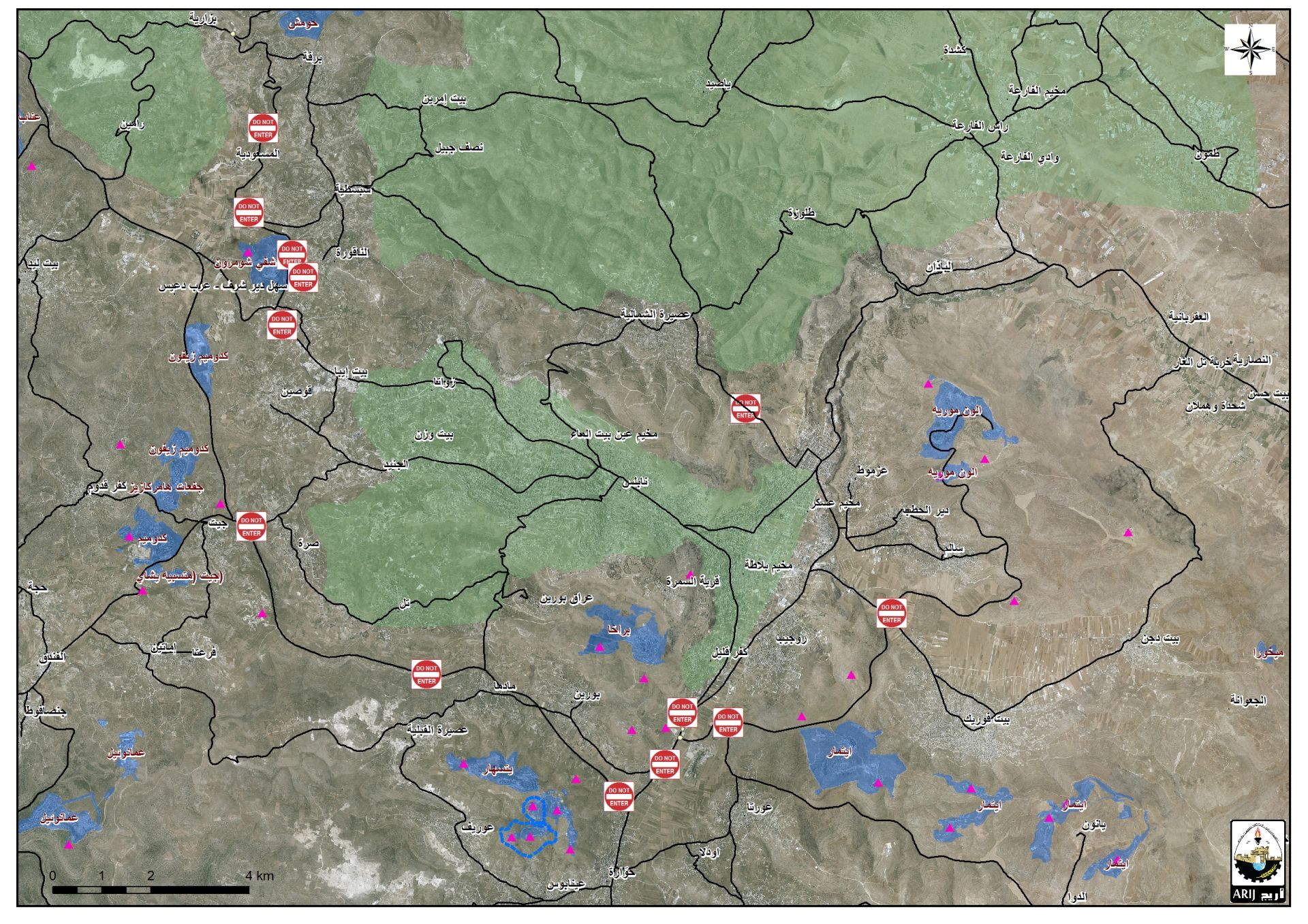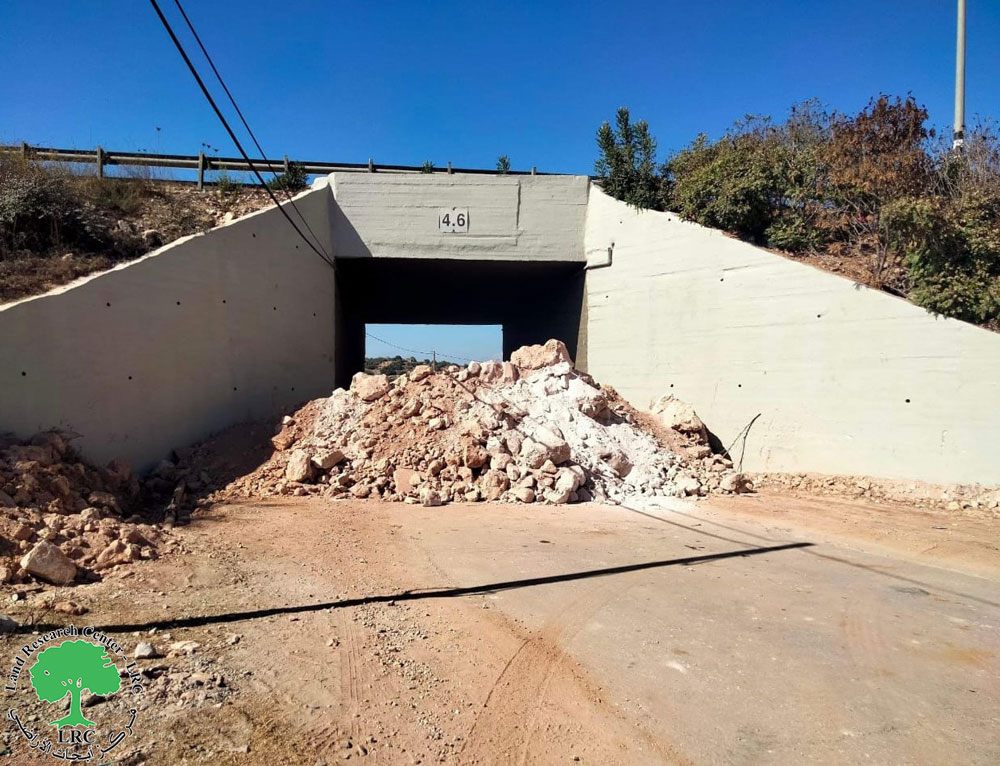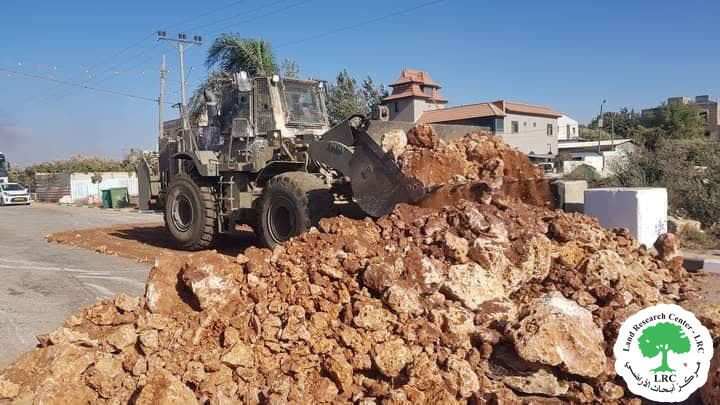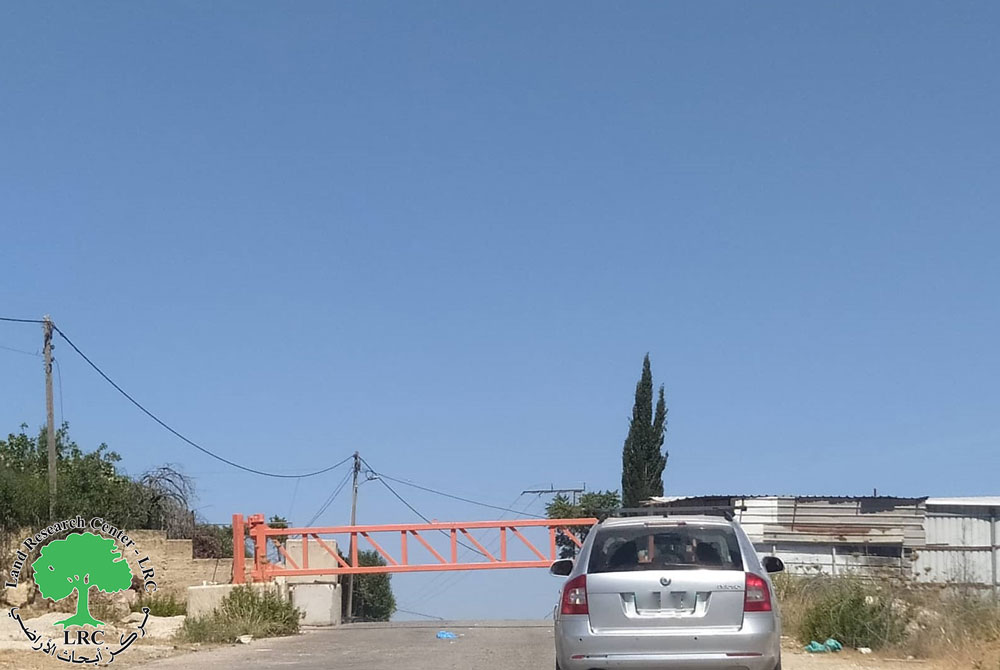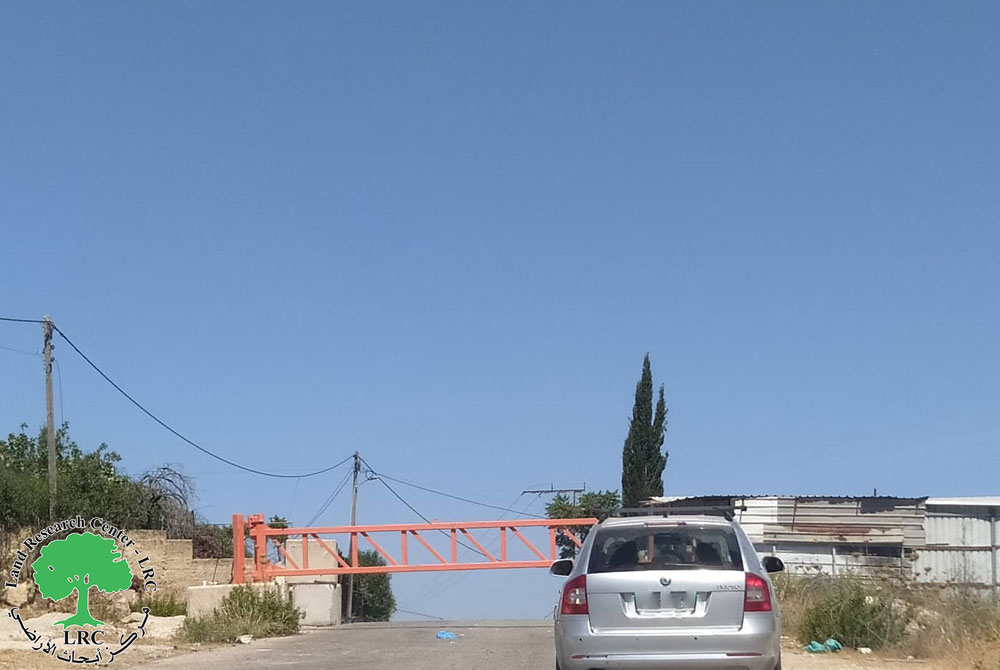The people living in the village of Nahhalin, located northwest of Bethlehem city, have been put and are still being put through a great deal of limitations and restrictions with the intent of Israel to steal their lands and make life in Nahhalin virtually impossible. The exceptionally clever and deceiving plans that Israel is currently implementing are to be regarded with great suspicion and analyzed very carefully.
The village boundary of Nahhalin is set at 17,250 dunums (1 dunum = 1,000 meters squared) with the different parts of the village occupied by various types of land such agricultural land, forests, open spaces, Palestinian built-up area, etc. However, the Palestinian built-up area has been largely increasing in the past few years reaching an all-time high of 496 dunums (ARIJ GIS 2009). See Table 1
|
Table 1: Land Use Land Cover of Nahhalin Village Lands |
|
|
Classification of Nahhalin Village Lands |
Area (Dunum) |
|
Agricultural Lands |
5930 |
|
Forests & Open Spaces |
7522 |
|
Artificial Surfaces |
24 |
|
Palestinian built-up area |
496 |
|
Israeli Settlement |
2988 |
|
Israeli Military Base |
290 |
|
Total Area |
17250 |
Source: ARIJ GIS Database – 2009
To ensure that the village of Nahhalin not only stops growing but actually decreases in both size and population, Israel has taken many steps to make life in the village practically unbearable. To start off, Israel has built at least ten Israeli settlements around the Palestinian built-up area of Nahhalin village (in Gush Etzion Area) with six of the settlements at least partly inside the village boundary. See Table 2
|
Table 2: Israeli Settlements in Nahhalin Village Boundary |
||||
|
No. |
Israeli Settlement |
Establishment Date |
Pop 2006 |
Israeli settlement Built-up Area (Dunum) |
| 1 | Geva'ot | 1984 | 44 | 135 |
|
2 |
Betar 'Illit |
1985 |
29000 |
688 |
|
3 |
Rosh Zurim |
1969 |
364 |
889 |
|
4 |
Allon Shevut |
1971 |
3300 |
589 |
|
5 |
Kfar Etzion |
1967 |
422 |
583 |
|
6 |
Bat Ayin (Tzurif) |
1989 |
804 |
104 |
|
|
Total Area |
|
33934 |
2988 |
Source: ARIJ GIS Database – 2009
For sufficient electricity to reach the settlements inside the Nahhalin village boundary, Israel needed to build electricity lines. However, they decided to build the electricity lines around the Palestinian built-up area further enclosing the Palestinians into themselves. As previously stated, the village boundary of Nahhalin is 17,130 dunums. However, the electricity lines being built will only leave the Palestinians with few thousand dunums of their previous 17,250 dunums.
In addition to the electricity lines serving as a border of the Palestinian built-up area, it also takes land away and prevents further expansion of the current Palestinian built-up area. The reason for this being that one cannot build anything remotely close to where the electricity lines will be located.
As if the numerous settlements, military basses, electricity lines, land confiscations and any other actions that Israel had already taken to provoke the Palestinians and steal their land were not enough, Israel also decided to build the Segregation wall around the Palestinian built-up area. The wall, which has been condemned and marked as illegal by the many International bodies, is encircling Nahhalin village in an enclave along with a number of Palestinian villages (Wadi Fukin, Husan, Battir, Al Walajeh, Al Balluta Hamlet, 'Afaneh Hamlet and Beit Skaria hamlet).
The current population of the Nahhalin villagers is increasing at an average of 300 individuals per year yet the land of these people is getting smaller and smaller. Any newly weds of the village that are looking to buy a new house are forced to leave the village because there is no space for a new house. Any villager that is looking for a better job in hopes of excelling in life will be forced to leave because the amounts of jobs available are decreasing with the land loss. Any farmer that used to live off his or her land is forced to leave because that individual’s land has been confiscated.
A look at the map below truly shows how much land has been illegally stolen from the Palestinian village of Nahhalin. This village, as well as many other villages that are experiencing the same problem, is a great example of how Israel plans on cunningly forcing all the Palestinians to move out of their homeland, therefore leaving all of the Holy Land for Israel.
::::::::::::::::__
-
[1] The Hague Regulations expressly forbids an occupying power 'to destroy or seize the enemy's property, unless such destruction or seizure be imperatively demanded by the necessities of war' (Article 23).
-
The Fourth Geneva Convention, Article 49.
-
Article 53 of the Fourth Geneva Convention is also clear that: 'any destruction by the Occupying Power of real or personal property belonging individually or collectively to private persons, or to the State, or to other public authorities, or to social or cooperative organizations, is prohibited, except where such destruction is rendered absolutely necessary by military operations.'
-
The appropriation and destruction of Palestinian land is an especially serious violation of the Fourth Geneva Convention, Article 147 of which clearly prohibits, ''extensive destruction and appropriation of property, not justified by military necessity and carried out unlawfully and wantonly.'' Violations of Articles of the Fourth Geneva Convention constitute grave breaches of the Convention and should be prosecuted as War Crimes.
-
Article 49 of the Fourth Geneva Convention relative to the Protection of Civilian Persons in Time of War, August 12, 1949, 6 UST 3516, paragraph 6: The Occupying Power shall not deport or transfer parts of its own civilian population into the territory it occupies.
-
Article 46 of the Hague Convention prohibits the confiscation of private property in occupied territory. The confiscation of land by the Israeli government for settlement construction is in violation of this article. (Laws and Customs of War on Land (Hague II); July 29, 1899).
-
Article 55 of the Hague Convention stipulates that 'the occupying state shall be regarded only as administrator and usufructuary of public buildings, real estate, forests, and agricultural estates belonging to the hostile State, and situated in the occupied country. It must safeguard the capital of these properties, and administer them in accordance with the rules of usufruct.' In other words, the occupying power cannot take over or use territories or private properties in the occupied territories to serve the interests of its civilian population. (Laws and Customs of War on Land (Hague II); July 29, 1899).
-
The Rome Statute of the International Criminal Court (1998) defines 'the transfer directly or indirectly by the Occupying power of parts of its own civilian population into the territory it occupies' as a War Crime indictable by the International Criminal Court. (Article 7, Crimes Against Humanity).
-
UN Security Council Resolution 465 of 1980 Determines that all measures taken by Israel to change the physical character, demographic composition, institutional structure or status of the Palestinian and other Arab territories occupied since 1967, including Jerusalem, or any part thereof, have no legal validity and that Israel's policy and practices of settling parts of its population and new immigrants in those territories constitute a flagrant violation of the Fourth Geneva Convention relative to the Protection of Civilian Persons in Time of War and also constitute a serious obstruction to achieving a comprehensive, just and lasting peace in the Middle East.
Prepared by:
The Applied Research Institute – Jerusalem


